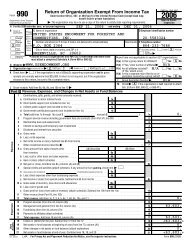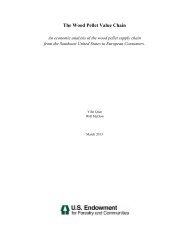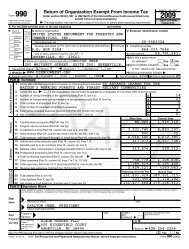The State and Future of U.S. Forestry and the Forest Industry (May ...
The State and Future of U.S. Forestry and the Forest Industry (May ...
The State and Future of U.S. Forestry and the Forest Industry (May ...
Create successful ePaper yourself
Turn your PDF publications into a flip-book with our unique Google optimized e-Paper software.
Chapter 2Private <strong>Forest</strong> L<strong>and</strong> Tenure <strong>and</strong> Ownership:Stability <strong>and</strong> Potential to Provide Sustainable Sources <strong>of</strong> Wood7IntroductionPrivately held forest l<strong>and</strong>s produce a wide range <strong>of</strong> values to l<strong>and</strong>owners, consumers, <strong>and</strong> society as a whole.Institutionally, <strong>the</strong> forest products industry has relied extensively on private l<strong>and</strong>s to meet growing dem<strong>and</strong>s bothat home <strong>and</strong> abroad. <strong>The</strong> ownership structure <strong>of</strong> <strong>the</strong>se private forests remained relatively stable through much<strong>of</strong> <strong>the</strong> 20th century. However, this structure began to shift significantly in <strong>the</strong> 1990s, such that <strong>the</strong> ownershipl<strong>and</strong>scape today bears little resemblance to owner types <strong>and</strong> classes <strong>of</strong> just 25 years ago.Corporations, particularly ownerships tied to <strong>the</strong> pulp <strong>and</strong> paper industry, have largely divested <strong>of</strong> l<strong>and</strong> holdings.This divesture over <strong>the</strong> past couple <strong>of</strong> decades has coincided with <strong>the</strong> emergence <strong>of</strong> a new-class <strong>of</strong> forestl<strong>and</strong>owner—<strong>the</strong> financial investor. Timber Investment Management Organizations (TIMOs) <strong>and</strong> Real EstateInvestment Trusts (REITs) represent two <strong>of</strong> <strong>the</strong>se new types <strong>of</strong> forestl<strong>and</strong> owners. Additionally, <strong>the</strong> trend towardsforests being divided into smaller parcels has led to many more l<strong>and</strong>owners, with each possessing smaller acreages.<strong>The</strong> backdrop with both <strong>of</strong> <strong>the</strong>se changes is <strong>the</strong> threat <strong>of</strong> losing forests to real estate development, diminishedaccess to sustainable <strong>and</strong> reliable sources <strong>of</strong> wood, <strong>and</strong> fragmentation <strong>of</strong> forest ecosystems to <strong>the</strong> point that <strong>the</strong>ycannot provide <strong>the</strong>ir range <strong>of</strong> ecological services.This shift in l<strong>and</strong>ownership types <strong>and</strong> l<strong>and</strong>ownership diversity has resulted in a range <strong>of</strong> challenges to effectiveforest management concomitant with reliable sourcing <strong>of</strong> raw materials <strong>and</strong> <strong>the</strong> pressure <strong>of</strong> competing withhighest <strong>and</strong> best economic uses <strong>of</strong> l<strong>and</strong>. Despite <strong>the</strong>se challenges, opportunities exist to reengage individuals<strong>and</strong> forest-proximate communities about <strong>the</strong> value <strong>of</strong> <strong>the</strong> nation’s forests. Robust forest communities can emergethrough efforts targeted at smaller l<strong>and</strong>owners, messaging regarding <strong>the</strong> importance <strong>of</strong> keeping forests as forests,<strong>and</strong> <strong>the</strong> development <strong>of</strong> tax incentives <strong>and</strong> alternative markets.Priority Trends <strong>and</strong> Issues <strong>of</strong> ConcernIn <strong>the</strong> mid-1990s, <strong>the</strong> valuation <strong>of</strong> vertically integrated forest products companies shifted due to <strong>the</strong> way <strong>the</strong>irlarge acreages were assessed by Wall Street. A result <strong>of</strong> this valuation shift was an industry-wide divesture <strong>of</strong><strong>the</strong>se assets. This transfer <strong>of</strong> forestl<strong>and</strong> from one class <strong>of</strong> owner to o<strong>the</strong>r ownership types was unprecedented <strong>and</strong>represented <strong>the</strong> single largest private l<strong>and</strong>ownership change in <strong>the</strong> nation’s history. 2 TIMOs <strong>and</strong> REITs beganpurchasing forestl<strong>and</strong> in earnest during this same time, <strong>and</strong> <strong>the</strong>y accelerated <strong>the</strong>ir purchasing through <strong>the</strong> earlyyears <strong>of</strong> <strong>the</strong> 21st century. In addition to TIMOs <strong>and</strong> REITs, smaller family-owned forests became a larger part <strong>of</strong><strong>the</strong> l<strong>and</strong>scape.TIMOs <strong>and</strong> REITsNew investment-type ownerships, such as Hancock Timber, <strong>Forest</strong> Investment Advisors, <strong>and</strong> Lyme Timber,represented a comparatively small share <strong>of</strong> forestl<strong>and</strong> ownership in 1990. Yet, <strong>the</strong>se types <strong>of</strong> forestl<strong>and</strong> ownershave nearly completely replaced vertically integrated forest products companies. Some <strong>of</strong> <strong>the</strong>se companies haverestructured <strong>the</strong>ir corporate divisions, such that companies that were once C-Corps have evolved into REITs(Weyerhaeuser <strong>and</strong> Rayonier for instance).2<strong>State</strong>ment <strong>and</strong> Figure 1 from Jim Hourdequin “Some Thoughts on <strong>the</strong> <strong>Future</strong> <strong>of</strong> TIMOs <strong>and</strong> REITs” presentation at <strong>the</strong> <strong>State</strong> <strong>and</strong> <strong>Future</strong> <strong>of</strong> <strong><strong>Forest</strong>ry</strong> in <strong>the</strong> US Meeting,Washington, D.C. <strong>May</strong> 29, 2013.





